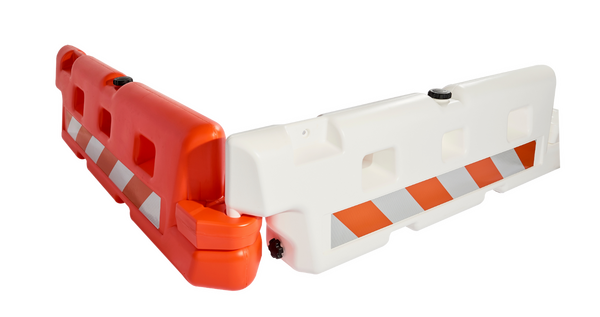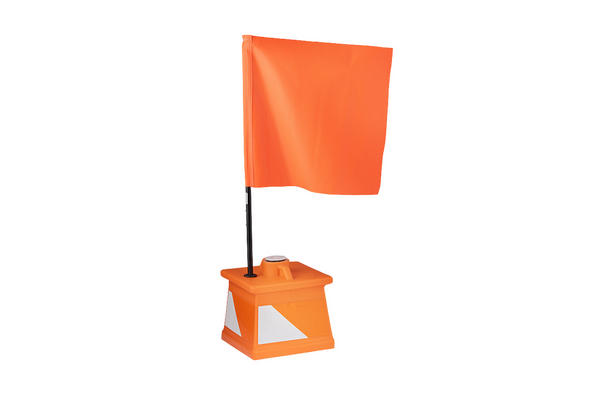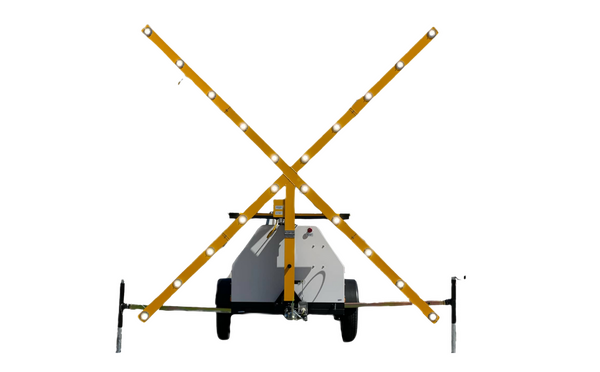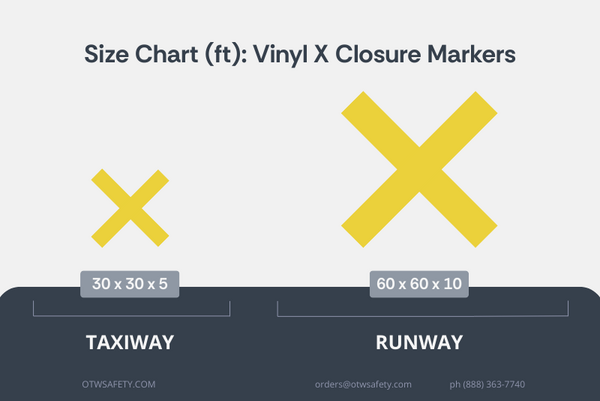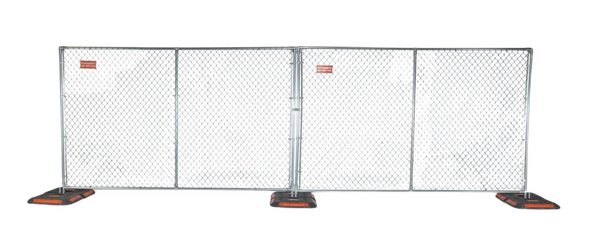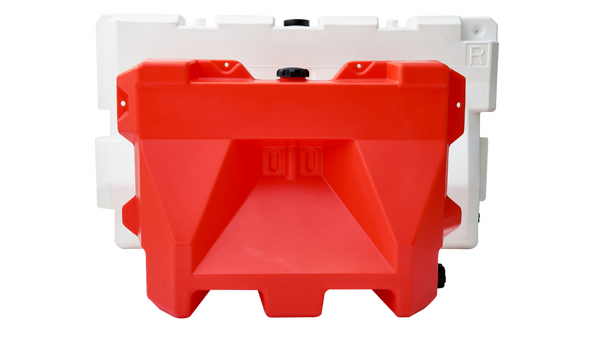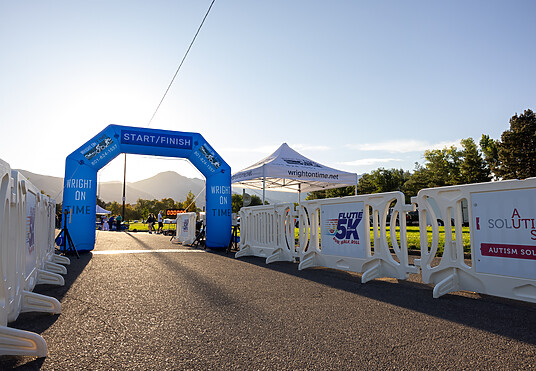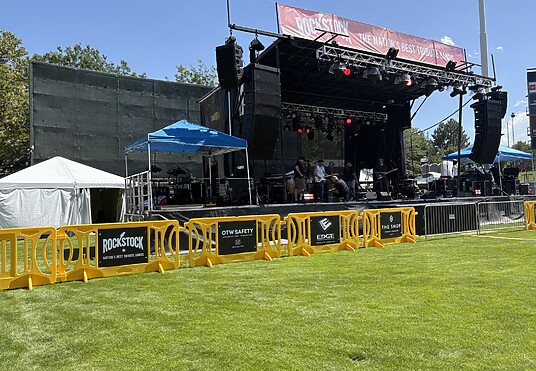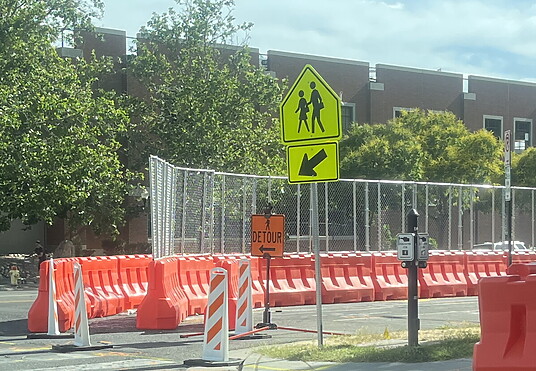Airport construction sites 🫱🏻🫲🏼 OTW Safety
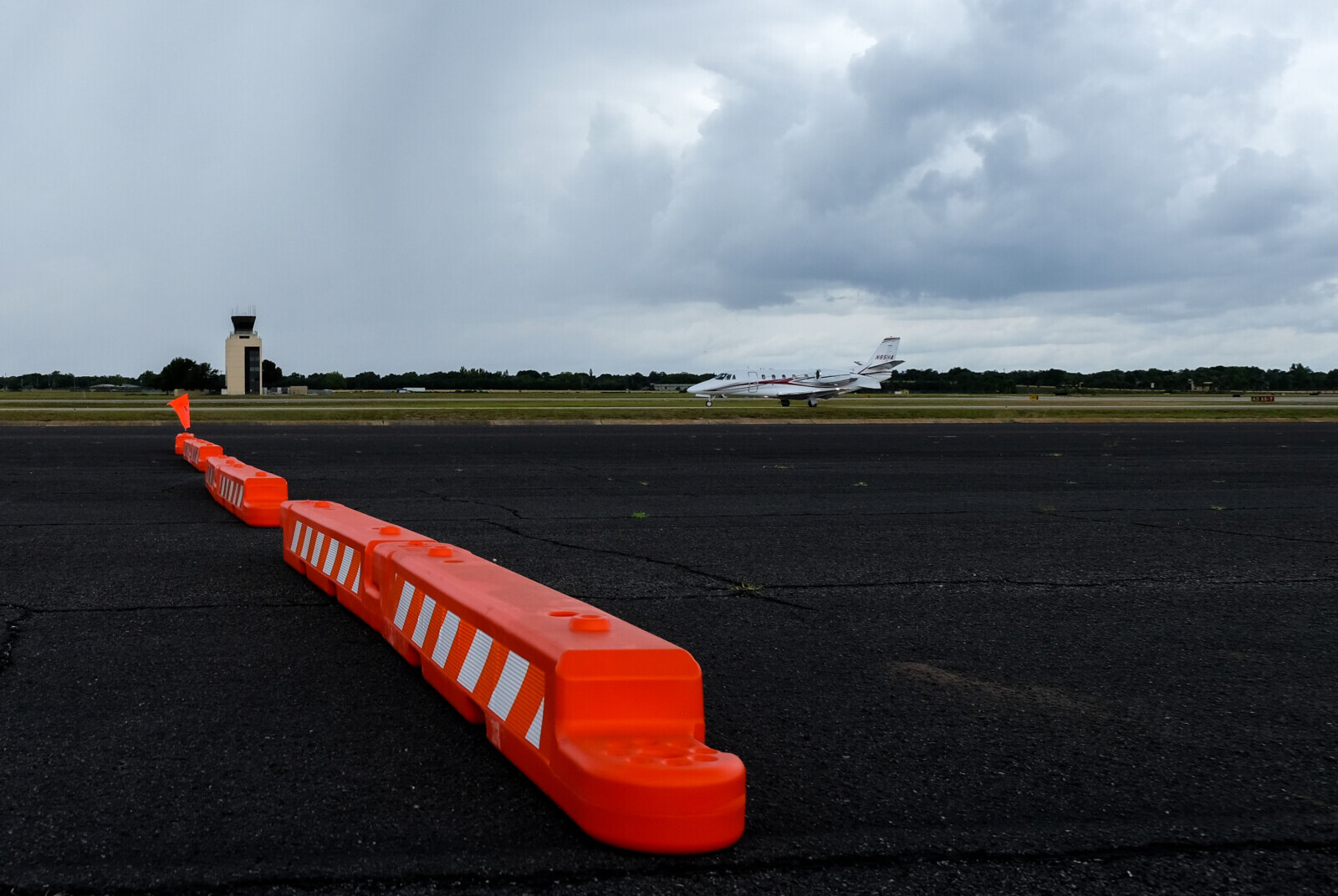
The right airport barricades and safety equipment make all the difference when it comes to setting up a safe and visible construction site on active airfields. Stringent regulations require that barricades be visible, frangible, and have a clear wingtip height for aircraft. Hazard flags must be FOD-free and hold up to jetblast from planes taxiing and taking off nearby.
OTW airport barricades find their place in Alabama
Over at Dothan Regional Airport in Dothan, Alabama, they found that OTW Safety airport barricades and hazard flags fit the bill perfectly to help them remain in compliance with the many regulations concerning construction on an airfield.
Our 2024 Photo and Video Contest winner, Jeremiah H, sent us a video of our 10” Low-Profile Airport Barricades and barricade hazard flags in action on a runway under construction by APAC Alabama. The barricades clearly mark where the work zone begins, and the hazard flags visually alert passersby to the closed section of runway. Pilots had no issue navigating the airfield and avoiding the active work zone, and the barricades are easily relocated once work is complete.
Here’s what he had to say about using OTW Safety products on their work site:
“We are working on a three-phase rehabilitation project on the main runway at the Dothan Regional Airport in Dothan, Alabama. This will include over 29,000 yards of asphalt milling and nearly 30,000 tons of asphalt. The safety materials we ordered from OTW are being used to block off active sections of the runway during our construction phases to keep aircraft from entering our work zone.”
Jeremiah H
Which safety products and barricades are most often found at airport construction sites?
Low-Profile Airport Barricades and Airport Barricade Flags aren’t the only safety products you might see at airport construction sites. There are numerous types of barricades, fencing, and more that find their place on an airfield’s active construction sites.
Jersey barriers and Barricade Fence Panels are frequently used to set up secure perimeters around construction sites that need increased privacy or security. Temporary Fencing can be used in addition to barricades and barricade fence panels or as a standalone security solution. Runway closure markers, whether lighted or made of a static material and secured to the ground, are found on every temporarily closed runway or taxiway to ensure that those lanes are not used by aircraft.
Low-Profile Airport Barricades and Mid-Profile Airport Barricades
Low-profile barricades are imperative on an airfield to indicate hazards to pilots. In order to be used near active aircraft, barricades have specific regulations per the FAA. Among these regulations is whether the barricade poses the least potential danger to aircraft: they must be frangible, FOD (flying object debris) free, and sturdy enough to withstand jetblast, high-speed winds, and prop wash.
The 10’ Low-Profile Airport Barricade, or the OTW AR10x96, is our originally manufactured, tried-and-true airport barricade, first engineered and produced by OTW nearly 30 years ago. While the first iteration was a great barricade, we’ve only improved it since then, and we’re proud to provide a fully FAA-compliant barricade: frangible, small but sturdy, and aids in creating an FOD-free airfield.
For alerting larger aircraft, the 24” Mid-Profile Airport Barricade is often chosen for its increased presence. With a patented FOD-free interlocking connection design, a wide base for superior stability, and visible from further distances, the AR24x96 is specifically designed to meet the needs of any size airport while exceeding FAA compliance standards.
Airport Barricade Flags
Barricade flags are often used in conjunction with low-profile and mid-profile barricades to highlight a hazard with a moving visual aid. As airfields are commonly windy thanks to jet blast, etc, the barricade flags wave merrily to alert pilots and crews to things they need to avoid. The requirements for airport barricade flags include being FOD-free and 20×20 inches large.
We made our Airport Barricade Flags the best they could be by recreating a traditional hazard flag step by step. We started with a sturdy fiberglass dowel instead of a wooden one and added an active retention design to hold it in place (no additional hardware necessary), and, when used in conjunction with our AR 10×96, is part of a fully FOD-free system. The tear-resistant safety flag available in safety orange or bright white rounds up the design for the perfect airport barricade hazard flag.
Lighted X and Vinyl X Closure Markers
FAA Advisory Circular AC 150/5370-2G covers Operational Safety on Airports During Construction and details the standards for marking active work zones, planning an airfield construction site, and more. In the case of runways closure markers, it lays out the recommended procedure and equipment for marking temporarily closed runways, often for maintenance or renovation. A lighted X closure marker is recommended in most circumstances, and must be lit at all times while it is on a runway. Paint is an option for temporary markings, but if it is not possible, flat X markers are also allowed and can be created out of fabric, colored plastic, painted sheets of plywood, or similar materials. All runway closure markers must be properly secured to prevent movement from jet blast, prop wash, etc, to ensure a FOD-free area.
For the lighted options, our Lighted X is the perfect choice. As with every one of our products designed for airport construction, the Lighted X is FAA compliant. With a sturdy housing, bright LEDs, and a giant X profile, it illuminates the day and nighttime sky easily to indicate to pilots that a runway is closed.
The Vinyl X is our newest addition to airport safety products: made of tear-resistant, bright yellow, UV-resistant polyethylene, it’s durable, reliable, and easy to secure (optional low-profile beanbags available for anchoring). With full FAA compliance, our vinyl runway closure marker makes marking closed runways a breeze.
Temporary Fencing and Barricade Fence Panels
No matter whether the airport construction site is landside or airside, temporary fencing is excellent for blocking access to the public or ensuring that a specific site is more secure. Temporary fencing generally stands independently (with help from sandbags or weights) and is a quick solution for work zones in need of more security. Barricade fence panels are used in conjunction with barricades (like our 32” Multipurpose JSS Barricade or 42” LCD Barricade) to create a strong and stable perimeter around a large work area.
Both are available on our site, and they can be used independently or in conjunction with each other to create a custom security solution.
Jersey Barricades
The OG traffic barricade, jersey barricades have long been known in the construction world for their versatility and strength. Through the years, they switched from concrete to plastic in many cases, and continue to be a staple on construction sites worldwide. Available in multiple sizes, they’re essential for creating strong perimeters around sensitive work sites, indicating large hazards, directing traffic, or for temporary or semi-permanent security applications.
OTW jersey barriers are the 32” Multipurpose JSS Barricade, the 42” Jersey Shape LCD Barricade (both compatible with our barricade fence panels, and the 32” Compact Jersey Shape LCD Barricade. Each has particular features that ensure that a construction site has highly visible, durable, and reliable perimeter security or hazard indication – many airports use them for just that!
OTW Safety products for your airport construction site
Visualizing any of these products on your airport construction site? Our experts can help make that a reality with a personalized quote for the best safety solution for your application. Give us a call or fill out our quote form, and we’ll get started right away.

